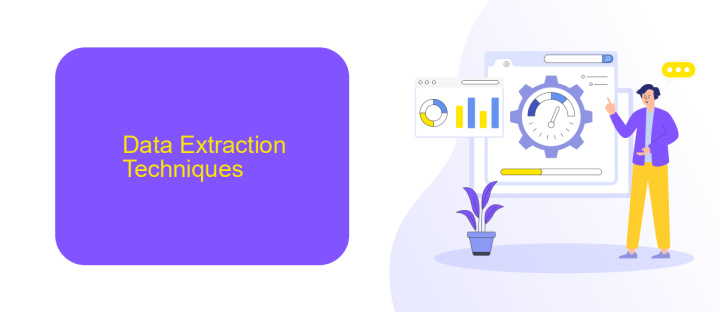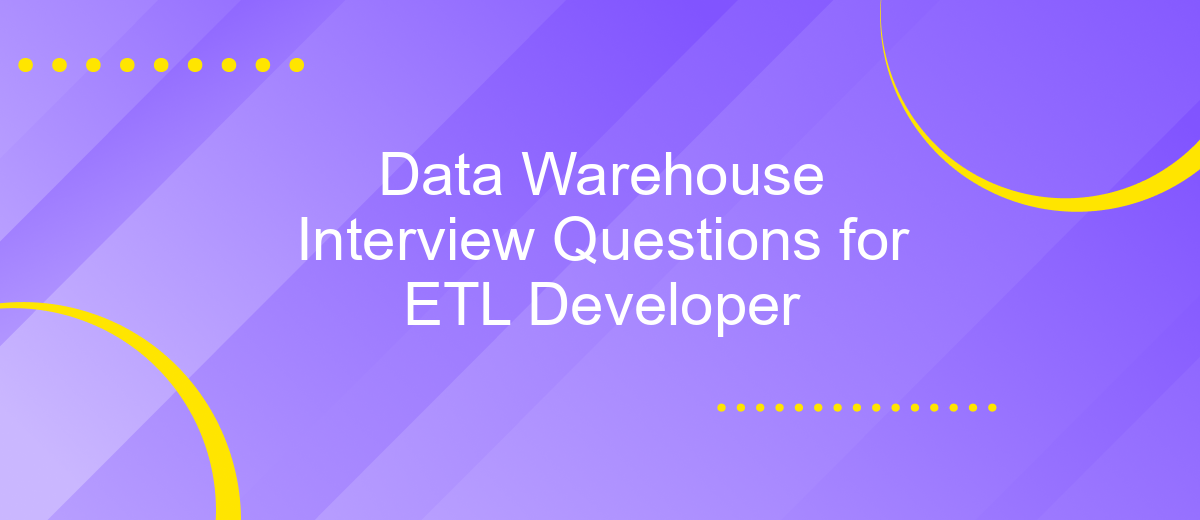Data Warehouse Interview Questions for ETL Developer
Preparing for an ETL Developer interview often involves a deep understanding of data warehousing concepts. This article aims to equip you with essential questions and answers that will help you demonstrate your expertise in ETL processes, data modeling, and warehouse architecture. Whether you're a seasoned professional or just starting out, these insights will boost your confidence and readiness for your next interview.
ETL Process Overview
The ETL (Extract, Transform, Load) process is a crucial component in data warehousing that involves extracting data from various sources, transforming it into a suitable format, and loading it into a data warehouse for analysis and reporting. This process ensures that data is clean, consistent, and ready for business intelligence tasks.
- Extract: Data is gathered from multiple sources such as databases, APIs, and flat files. Tools like ApiX-Drive can simplify this step by automating data extraction from various services.
- Transform: The extracted data is then transformed to meet the required format and quality. This involves data cleaning, normalization, aggregation, and enrichment.
- Load: Finally, the transformed data is loaded into the data warehouse. This step ensures that the data is available for querying and analysis.
Effective ETL processes are essential for maintaining data integrity and enabling accurate business intelligence. By leveraging tools like ApiX-Drive, organizations can streamline their ETL workflows, ensuring efficient data integration and management.
Data Extraction Techniques

Data extraction techniques are fundamental for ETL developers as they form the first step in the data warehousing process. These techniques involve retrieving data from various sources, including databases, APIs, and flat files, to prepare it for transformation and loading into a data warehouse. Common methods include full extraction, where all data is extracted from the source system, and incremental extraction, which only retrieves new or updated data since the last extraction. Each method has its pros and cons, with full extraction being simpler but more resource-intensive, and incremental extraction being more efficient but complex to implement.
Modern data extraction often leverages integration platforms like ApiX-Drive, which facilitate seamless data transfer between disparate systems. ApiX-Drive supports a wide range of data sources and can automate the extraction process, reducing the need for manual intervention and minimizing errors. By using such services, ETL developers can ensure that data is consistently and accurately extracted, enabling more reliable and timely analytics. This approach not only streamlines the ETL process but also enhances the overall data quality within the data warehouse.
Data Transformation Best Practices

Effective data transformation is crucial for ensuring data quality and consistency in a Data Warehouse. Adhering to best practices can significantly enhance the efficiency and accuracy of your ETL processes.
- Ensure Data Quality: Validate and clean data before transformation to avoid propagating errors.
- Use Incremental Loads: Only process new or changed data to reduce load times and resource usage.
- Automate Processes: Utilize tools like ApiX-Drive to automate data integration and transformation tasks, minimizing manual intervention.
- Maintain Metadata: Keep detailed records of data transformations to facilitate troubleshooting and audits.
- Optimize Performance: Use indexing, partitioning, and parallel processing to speed up data transformations.
By following these best practices, ETL developers can ensure that their data transformations are not only efficient but also reliable. Leveraging automation tools like ApiX-Drive can further streamline the process, allowing for seamless integration and transformation of data across various sources.
Data Loading Strategies

Data loading is a critical aspect of ETL processes in a data warehouse environment. Efficient data loading strategies ensure that data is moved from source systems to the data warehouse accurately and in a timely manner. There are several strategies to consider, each with its own benefits and drawbacks.
One common strategy is full load, where the entire dataset is loaded into the data warehouse. This approach is straightforward but can be time-consuming and resource-intensive, especially for large datasets. Another approach is incremental load, which only loads data that has changed since the last load. This method is more efficient and reduces the load on the system.
- Full Load: Loads the entire dataset; useful for initial loads or small datasets.
- Incremental Load: Loads only changed data; efficient for ongoing data integration.
- Batch Processing: Groups data into batches for periodic loading; balances system load.
- Real-Time Processing: Loads data as soon as it is available; ideal for time-sensitive applications.
Utilizing integration services like ApiX-Drive can streamline the data loading process. ApiX-Drive offers automated data transfer capabilities, ensuring that data is consistently and accurately loaded into your data warehouse. By leveraging such services, ETL developers can focus on optimizing data transformation and analysis rather than managing data transfer logistics.
- Automate the work of an online store or landing
- Empower through integration
- Don't spend money on programmers and integrators
- Save time by automating routine tasks
Data Quality Management
Data Quality Management is a critical aspect of any data warehouse environment, ensuring that the data used in ETL processes is accurate, complete, and reliable. Effective data quality management involves implementing robust validation rules, data cleansing techniques, and continuous monitoring to detect and rectify errors. ETL developers must be adept at identifying data anomalies and inconsistencies to maintain the integrity of the data warehouse.
Integrating tools and services, such as ApiX-Drive, can significantly enhance data quality management. ApiX-Drive allows seamless integration of various data sources, automating data transfers and ensuring that data is consistently updated and synchronized. By leveraging such services, ETL developers can focus more on refining data quality processes rather than manual data handling, thereby improving overall efficiency and accuracy in data management.
FAQ
What is a Data Warehouse and why is it important for ETL processes?
What are the key differences between ETL and ELT?
How do you handle data quality issues in ETL processes?
What is the role of automation in ETL processes?
How can you ensure the performance and scalability of ETL processes?
Time is the most valuable resource for business today. Almost half of it is wasted on routine tasks. Your employees are constantly forced to perform monotonous tasks that are difficult to classify as important and specialized. You can leave everything as it is by hiring additional employees, or you can automate most of the business processes using the ApiX-Drive online connector to get rid of unnecessary time and money expenses once and for all. The choice is yours!


